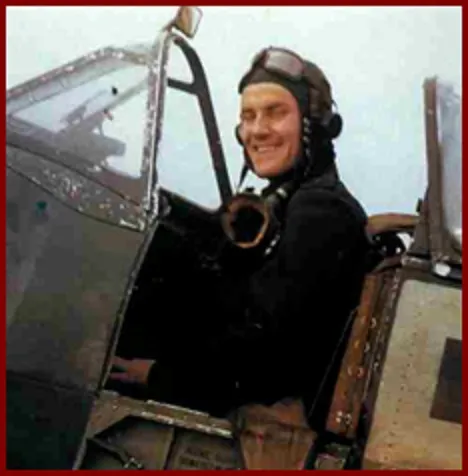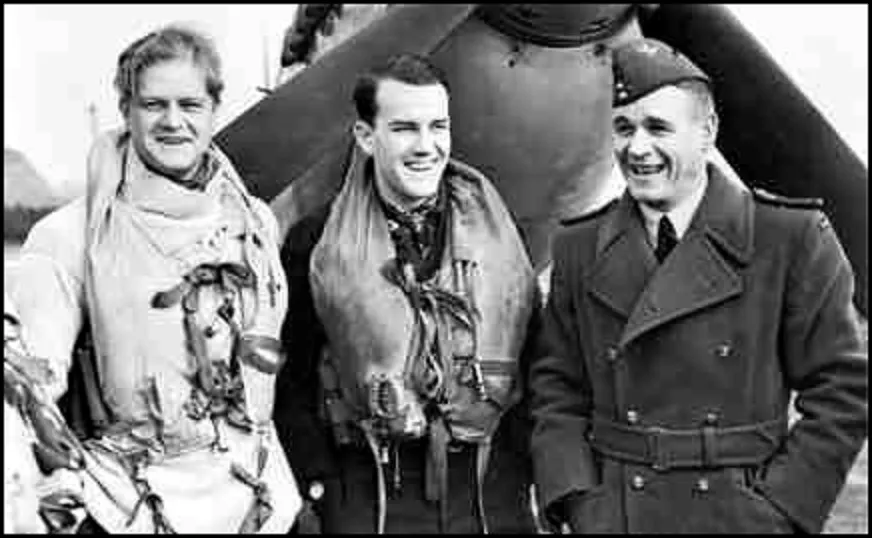SQNLDR Hugo Throssell Armstrong 406022
DFC with Bar



| Squadron/s | 611 SQN RAF |
| Rank On Discharge/Death | Squadron Leader (SQNLDR) |
| Nickname | Sinker |
| Date of Birth | 09 Jun 1916 |
| Date of Enlistment | 25 May 1940 |
| Date of Death | 05 Feb 1943 |
| Contributing Author/s | Thanks to Wikipedia, AWM and Mirage's Australian Aviation Outlook The Spitfire Association |
Hugo was born on the 9th June 1916 in Perth, Western Australia. He was the nephew of Captain Hugo Throssell VC of the 10th Light Horse Regiment. Captain Throssell was warded his VC at Gallipoli during World War One.
Sinker, as he was known to his mates in the RAF, enlisted on the 25th May 1940. After training, he was posted to the UK and initially joined 257 Squadron. In the Summer of 1941, he was posted to 129 Squadron with the rank of Pilot Officer, and in 1942 he was promoted Flight Lieutenant and posted to 72 Squadron. Later in 1942, he was promoted to Squadron Leader and then posted to 611 Squadron as their Commanding Officer. At that time, at the age of 26, he was the first Australian JATP (Joint Air Training Plan) trainee to command a RAF Squadron in the UK.
The photo is of Wing Commander Richard Maxwell Milne RAF, Wing Leader, Biggin Hill on the left, Adjutant Robert G. Gouby, 340 Squadron RAF (Free French Air Force) on the right and Squadron Leader Hugo Armstrong in the middle.
Sinker was credited with 12 kills, all of them whilst flying Spitfires and all with RAF Squadrons. By the time he had joined 611 Squadron, his tally had reached nine kills. The first occurred on the 21st September 1941 when he shot down a Bf 109E over Le Torquet whilst escorting Blenheims in a 129 Squadron Mk VB. The move to 611 Squadron gave him the opportunity to fly the Spitfire Mk 1X, and all of the other three victories, plus a further two probables, were using this mark in his aircraft BS435/FY-F. The first of these were scored on the the 2nd November 1942 when he claimed a FW 190 destroyed and a Bf 109E was noted as a probable. He claimed another FW 190 probable on the 9th November over Calais. Two further kills followed on the 20th January 1943, this time a pair of Bf 109Fs south of Pevensey Bay. These aircraft had been part of a raid on Biggin Hill. During this battle, the Squadron shot down a total of six aircraft.
(Web Master: I cannot ascertain if Hugo’s aircraft was BS435 or BS245)
Whilst serving with 72 Squadron during April 1942, the Spitfire he was flying (BM384) developed engine problems and he was forced to crash land at Gravesend. Sinker was injured and the aircraft suffered Cat B damage, but it was repaired and returned to service.
Sinker was already an Air Ace of World War Two when he was killed in action on the 5th of February 1943. On that day, he was on a "Scramble" mission with two other Spitfires to intercept an FW 190 raid from 5/JG26. They were attacked by eight Fw 109s when he was over the English Channel off Boulogne. The German pilot credited with his "kill" was Ofz Heinz Gomann.
The photo is of Squadron Leader Slater (AFC and killed in action on the 14th March 1943), Sinker and Sailor Malan
Sinker has no known grave and is commemorated on the Runneymede Memorial in Surrey UK, panel 187. He was the son of Percival Willam and Grace Ethel Armstrong of Travancore in Victoria.
